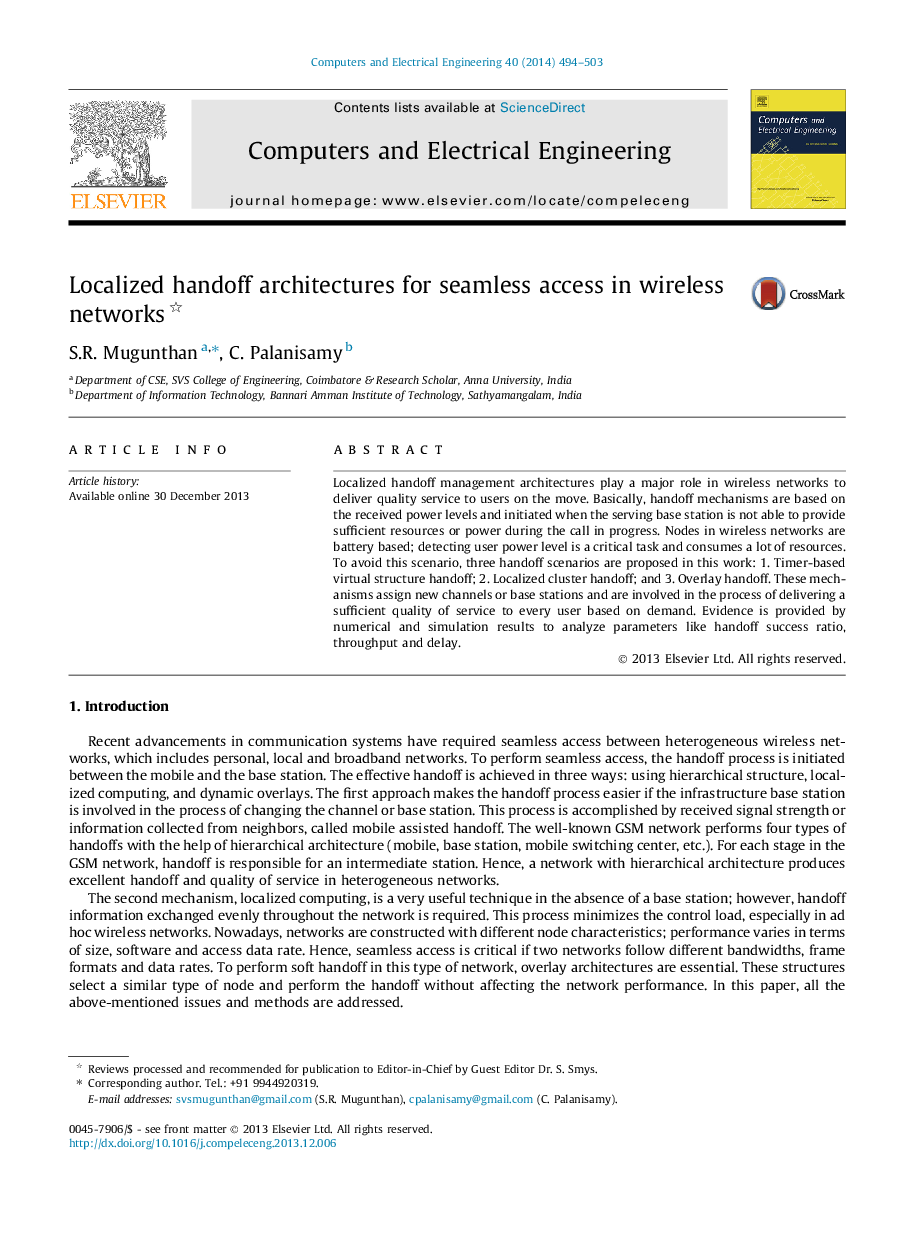| Article ID | Journal | Published Year | Pages | File Type |
|---|---|---|---|---|
| 10341106 | Computers & Electrical Engineering | 2014 | 10 Pages |
Abstract
Localized handoff management architectures play a major role in wireless networks to deliver quality service to users on the move. Basically, handoff mechanisms are based on the received power levels and initiated when the serving base station is not able to provide sufficient resources or power during the call in progress. Nodes in wireless networks are battery based; detecting user power level is a critical task and consumes a lot of resources. To avoid this scenario, three handoff scenarios are proposed in this work: 1. Timer-based virtual structure handoff; 2. Localized cluster handoff; and 3. Overlay handoff. These mechanisms assign new channels or base stations and are involved in the process of delivering a sufficient quality of service to every user based on demand. Evidence is provided by numerical and simulation results to analyze parameters like handoff success ratio, throughput and delay.
Related Topics
Physical Sciences and Engineering
Computer Science
Computer Networks and Communications
Authors
S.R. Mugunthan, C. Palanisamy,
